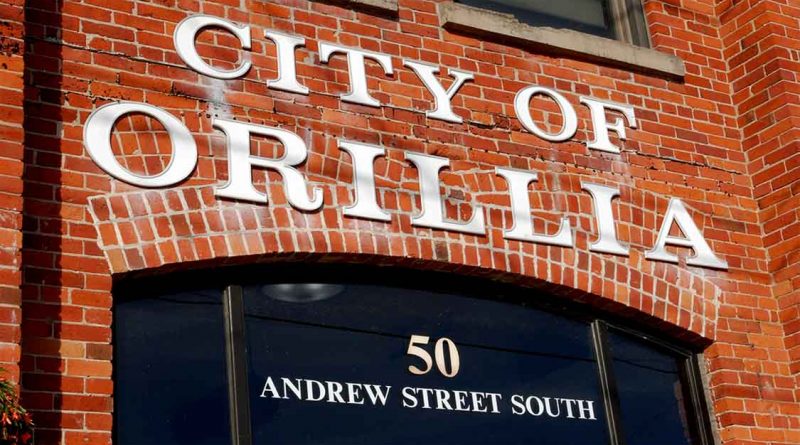Council Preview
By John Swartz
Orillia council has an early start to their meeting on Monday. They will have a special meeting about the City’s Official Plan updating process.
Official Plans are supposed to be updated every 5 years, which in turn necessitates updating zoning by-laws. The current plan was approved by the province in 2011, so we’re a little late. However the province radically changed all the rules over the last two years so any newer Official Plan would be obsolete anyway. The province is not done on this count. Staff say they expect a new policy statement by the end of the year, and the province will abandon the existing growth plan. It’s like trying to turn on the lights, but the electricians keep moving the switch.
The current Official Plan has been amended to include all the changes the province keeps throwing at municipalities, so at this point, this process is less an update and more creating a new plan from the ground up.
The purpose of an official plan is to draw a big picture of what the city should look like, while zoning is a micro plan, street by street, lot by lot, designation of what goes where.
Think of it as one is about where we want to be, the other how we are going to do it.
Of course, things change over time. Other levels of government make new rules, great opportunities come along that no one thought of when the last plan was created, or maybe a city decides being a one industry town doesn’t work anymore, or single family homes on every street isn’t working any longer.
Sometimes the bureaucrats at City Hall don’t have all the good ideas, or all the answers, so revising an official plan includes public input. An update, “establishes the goals, objectives, and policies for managing growth, ensuring adequate housing, jobs, infrastructure, community services, and protecting the natural areas.”
Part of the problem is the word growth. We are conditioned to think nothing will be good if we don’t grow. This time around the process may also include consideration for land outside the current city boundaries which are the focus of a border expansion study. You can only grow so far inside a box. Then the questions also include if we grow in geographic size, what should the plan look like? How does this affect what already exists? And, if the boundaries don’t change, then what?
The City also has some medium sized plans (i.e. transportation, Downtown Tomorrow, Climate Change Action Plan, park system) which need to be incorporated. There is also a study of natural environments and a flood plain study, while not complete, will affect the Official Plan.
Of course there are consultants involved. There are two firms working on Orillia’s update, WSP is the lead and SHS consulting will focus on housing.
The cost of the exercise is $397,000, which includes the natural environment and flood plain studies.
There is a public meeting November 21 at the Mariposa Inn from 7 to 9 p.m. People can also send their ideas or concerns to jlewis@orillia.ca. . All the relevant details are available on the City’s website.
Staff expect it will take two years to have a new Official Plan.
On With the Regular Meeting
Following the Official plan portion, council will move straight to the public forum and then a closed session. In the closed session, three items are listed. One is about new inductees to the Orillia Hall of Fame, another to discuss extending an option to purchase for some lots in the Horne Business park. Last is about buying some land.
Back in public, council has eight different reports to wade through before getting to the consent agenda.
Three of those are about dealing with local effects of failed policy at higher levels of government – which means spending property tax dollars for no vision elsewhere.
The first is a report from the opioid crisis working group. The first recommendation is to transform the working group into a formal committee. They would then work on finding a location to establish a drop in center, and create an education campaign. The education program is less about – don’t do drugs, and more about letting people know the extent of the problem here in Orillia, and it’s related topic homelessness.
Everyone thinks, “why don’t they just get treatment?’ The working group found (among other things) the problem is getting treatment is about as easy as baking a pie without an oven. Additionally, Orillia has no detox facility.
Another report answers a council referral to provide portable toilets and regular garbage pickup at various encampment sites around town. Staff estimates an annual budget of $60,000 is needed to install four portable toilets and garbage bins.
The third we didn’t create this problem issue being reported on is about the number of swimming advisories issued this year. A third of all swimming advisories over the last 5 years happened in 2023.
Staff say one of the biggest factors contributing to low water quality is rain runoff. Our stormwater system was built according to seasonal conditions experienced over time. Of course that’s all changed. While we may not have had as many rain days this year, when we have had them they have been heavier than normal and it’s its runoff from heavy rainstorms that are the biggest problem.
The City’s stormwater sewer system gets overwhelmed when we get dumped on. The City has installed oil and debris separators on 4 stormwater outlets going to Lake Couchiching. Councillor Tim Lauer began the City preparing to divert storm water to the water treatment system a few years ago, but it’s is still in development.
Staff say a number of things need to be done to handle storm runoff, including more catch basins, cleaning the existing ones more frequently, installing separators on two other outlets, and creating more stormwater collection ponds. Treating stormwater is a problem right now because the wastewater treatment centre doesn’t have the capacity. This is something Lauer warned about, and why your water bill now includes a charge for stormwater in addition to clean and waste water.
Making matters worse, the province, with Bill 23, removed the ability of cities to regulate site plans for developments of less than 10 units (i.e. not allowing paving over every square inch) and planning for water runoff.
Staff do say, while the problem was worse in 2023, it could have more so had policies like the ones Lauer advocated for, were not implemented during the last few years.
Having Your Say
Staff have a report responding to a council enquiry to amend the policy for the public forum, which currently limits comment to items only on that meeting’s agenda.
In December, when council was new to the job, staff dropped a bunch of policy changes on them. One of which was an anti-democratic, gate-keeping move to limit what people could address council on to only items on the agenda of the meeting.
The report for the CAO and corporate services outlines several justifications why residents should not be allowed to address council publicly on any issue they think is important for council to, at the very least, be aware of. It does not address the question of changing the procedure back to allowing compete public discussion.
It does make one tiny concession to limiting addressing council to only matters in municipal jurisdiction (broader than just the day’s agenda). That means asking council to bring the weight of the municipality against policy by higher levels of government, or alerting council to pending moves of local consequence by the same won’t be allowed. Which of course ignores councillors routinely bring matters up that only relate to provincial or federal responsibilities – you just won’t be able to.
Are We Making Any Money?
That’s a line this writer used to use on the former treasurer Jim Lang, as a joke. It turns out we are. The City’s balance sheet improved by $42 million in 2022 to $194.7 million.

The current treasurer, John Henry, said it is, “mainly attributed to an increase in cash.”
A good part of the improvement is because of a change in investment philosophy. The City is making more on interest income from where they park tax dollars before spending. The City currently has $132 million in various investment certificates The value of the City’s ownership of Orillia Power Corporation went up slightly to $18.8 million.
The timing of payments also changed, which allowed the City to keep money in interest bearing accounts longer. As far as 2022 went, the City underspent the budget (mostly funded by property tax) by $604,000.
When it comes to revenue, $111 million, from all sources (including grants, user charges) against expenses, the City is $20 million ahead in 2022.
Other factors include COVID. Some capital projects were delayed (trades availability, supplies availability still not recovered) and the money was not spent as budgeted (it’s still being spent, just not in the fiscal years intended). All additional funds have been allocated to reserve accounts.
Water Out
Staff want to reconsider a project to improve the operation of the waste water treatment plant. Currently the aeration portion is a single pass system and is such that the entire flow cannot not be shut down for maintenance or repair.
There was a plan approved to construct a dividing wall system with a $3.4 million budget. However, the only bid for the project came in at $16 million. One aspect, the bypass pump was quoted at 5 times the estimated cost. Staff wants to redesign the project, which may include constructing new holding tanks. That will reduce reliance on a bypass pump and will likely increase capacity of the treatment facility. Staff estimate the redesign will cost $725,000
911
The CRTC told the City it had to upgrade the 911 service, meaning new equipment. The province has grant programs to pay for much of the cost, however, the deadlines of implementation do no line up with grant approvals. Staff are asking council to front $360,000 in addition to previously budgeted $136,000 so the contractor, Netagen Communication Technologies Inc., can do its work to provincial deadlines. The city expects to get grants to offset the immediate expense.
Enquiry Motions
There are three. Councillor Janet-Lynne Durnford would like staff to report on installing a sidewalk on the south side of Fittons Road East between Jamieson Drive and Fitton Heights, and a crosswalk at Jamieson Drive.
Mayor Don McIsaac, and councillors Durnford and Lauer want staff to report on the cost and timeline to resurface part of Cedar Island Road.
The third motion is from the mayor and councillors Durnford and Fallis is to have staff report on, “he establishment of a managed encampment site or sites within the City of Orillia, which include independent structures with 24-hour support for chronically homeless individuals, as defined by the County of Simcoe; AND THAT this report consider possible locations, infrastructure requirements, term of service, partners, operating and capital costs, mitigation of risks and safety considerations, management options for the site(s), and feasibility of the project(s); AND THAT staff be directed to consult with the County of Simcoe, and local agencies that provide services for the City’s most vulnerable; AND THAT staff be directed to report back to Council by March 2024.”
Council meetings can be watched on the City’s Youtube Channel – live, or at any time afterward.
(Photos by Swartz – SUNonline/Orillia)




